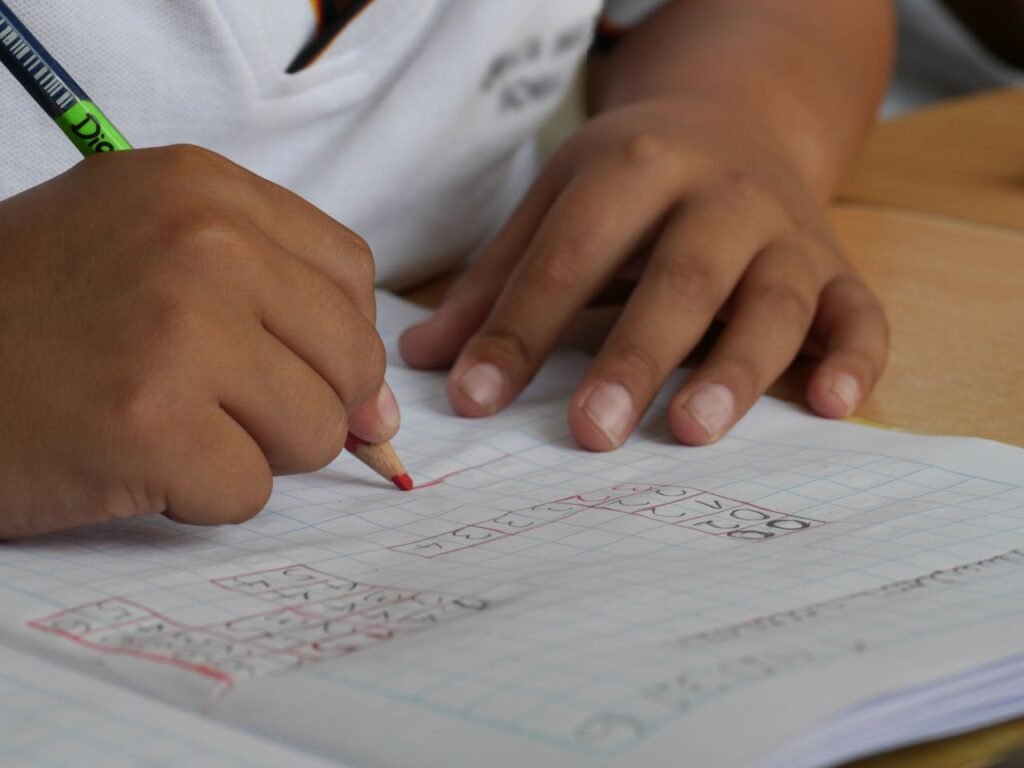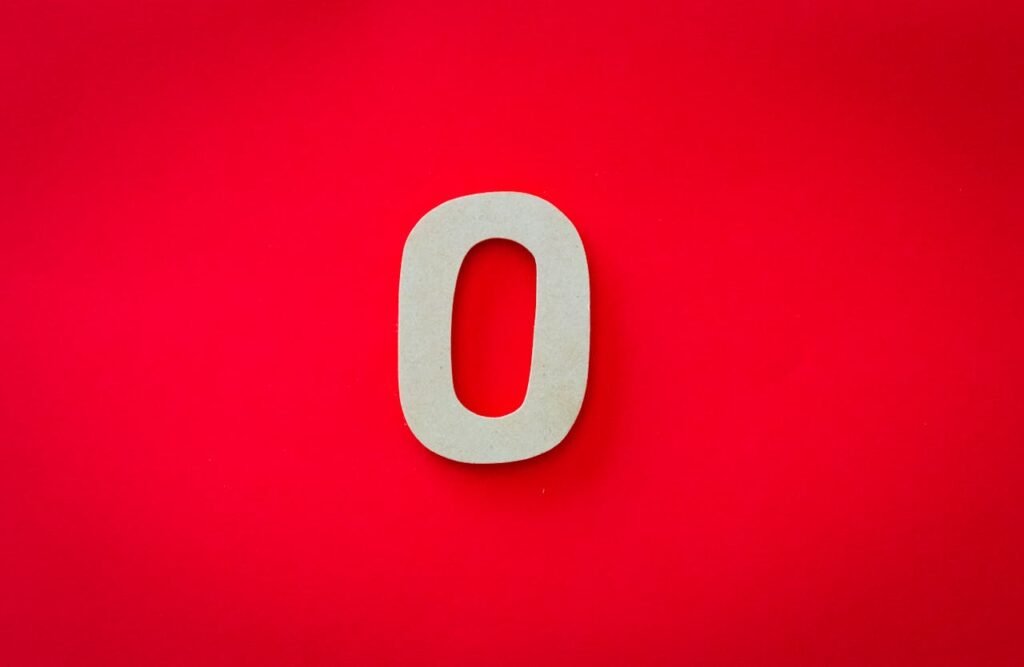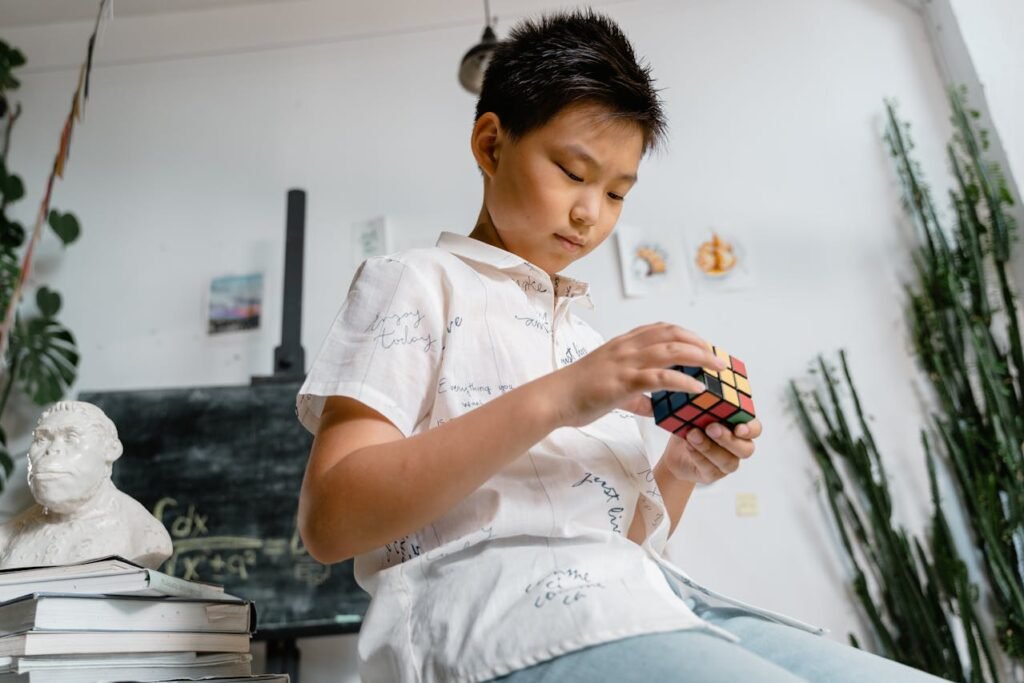Have you ever seen a really big number—like 9,804,231—and felt a little lost? You’re not alone. Big numbers can seem tricky at first, but there’s a simple secret to understanding them. It’s called place value, and once you learn how it works, reading and working with big numbers becomes super easy.
Place value means that each digit in a number has its own job, depending on where it sits. A number isn’t just a bunch of digits—it’s a team, and each player (or digit) has a different role. For example, in the number 352, the “3” means 300, the “5” means 50, and the “2” means just 2. Same digits can mean totally different things depending on their place!
At Debsie, we teach place value in a fun, clear, and simple way. When kids understand this concept, it helps them with everything else in math—adding, subtracting, comparing numbers, even working with money and decimals. So let’s dive in and explore the magic of place value, one step at a time. Big numbers? No problem!
What Is Place Value?
Let’s start with the most important question: what exactly is place value? Imagine you have the number 748. That number has three digits: 7, 4, and 8. But they don’t all mean the same thing. The “7” isn’t just a seven—it actually means 700. The “4” means 40. And the “8” means just 8. That’s because of place value.
The Value Depends on the Place
Each digit sits in a place, or a spot, and that spot tells us how much the digit is worth. In math, these spots are called “places,” and they go in a certain order: ones, tens, hundreds, thousands, and so on. The place farthest to the right is always the ones place. The next one to the left is the tens place. Then comes the hundreds place, and it keeps growing.
So in 748, the “8” is in the ones place, the “4” is in the tens place, and the “7” is in the hundreds place. That means 7 hundreds, 4 tens, and 8 ones. It’s like building blocks—you stack them in the right order to make the full number.
Why It Matters
Place value helps us read and understand numbers. Without it, 748 would just be a random mix of digits. But because of place value, we know that it’s really seven hundred forty-eight. This skill is the first step to doing well in math. It’s not just about reading numbers—it helps you with adding, subtracting, and even with money and time.
How Place Value Grows

Now let’s go a little deeper. Numbers don’t just stop at hundreds. They can grow much bigger. So how does place value grow with them?
From Thousands to Millions
After hundreds comes thousands. Then comes ten thousands, hundred thousands, and after that, you reach the millions. That might sound like a lot, but it works just like the smaller places. Each new place is ten times bigger than the one before it. For example, ten hundreds make one thousand. Ten thousands make one hundred thousand. And ten hundred thousands make one million.
Take the number 3,482,109. Each digit in that number has a different place. The “3” is in the millions place. That means it’s not just a 3—it’s worth 3 million! The “4” is in the hundred thousands place, meaning 400,000, and so on. Every place has its own job.
Reading Big Numbers
When you understand place value, reading big numbers becomes easy. You just break the number into groups. Most numbers are broken into groups of three digits, called periods. You can have the millions period, the thousands period, and the ones period. Each group tells you a different part of the number.
So in 3,482,109, we read it as “Three million, four hundred eighty-two thousand, one hundred nine.” That’s not so scary when you break it into parts, right?
Why Zeros Are Super Important
Now let’s talk about something that confuses a lot of kids: zeros. What does a zero really mean in a number? If it’s just a “nothing,” then why do we even need it?
Zeros Hold the Place
Zero might seem small and useless, but it’s actually a superhero when it comes to place value. Without zero, we wouldn’t know what place each digit is in. It helps keep everything in the right order. Think of it like an empty seat on a bus. Even if nobody is sitting there, the seat still exists—and it helps everyone else stay in the right spot.
Let’s look at the number 304. The “3” is in the hundreds place. The “0” is in the tens place. That zero tells us there are no tens. Without the zero, the number would be 34—which is totally different! So the zero is not just sitting there doing nothing—it’s holding space and keeping things in place.
What Happens If We Forget Zeros?
Imagine writing 5040 without that middle zero. It would look like 540, which is way smaller than five thousand forty! That one zero changes the whole meaning of the number. So even though zero means “none,” it still has a big job to do. Place value wouldn’t work properly without it.
Breaking Down Numbers With Place Value

Now that we know how place value works, let’s see how we can break numbers apart to really understand what they’re made of. This is called expanding the number.
What Is Expanded Form?
Expanded form is just a way to show the value of each digit in a number. It’s like pulling a number apart to see what’s inside. For example, if we take the number 672, we can break it down like this:
- 600 (that’s the 6 in the hundreds place)
- 70 (that’s the 7 in the tens place)
- 2 (that’s the 2 in the ones place)
Put it together and you get 600 + 70 + 2. That’s the expanded form. It helps us really see how each digit adds up to make the full number.
Why Use Expanded Form?
Using expanded form helps your brain get better at understanding what numbers mean. It shows you exactly how each digit is working. If you know that the “5” in 5,203 means 5,000 and not just 5, you’ll make fewer mistakes and feel more confident when doing bigger math problems.
At Debsie, our students practice expanded form with fun games and real-world examples—like breaking apart prices at a pretend store or figuring out how many pieces of LEGO are in each box. It makes place value feel real and exciting.
Place Value in Real Life
Place value isn’t just something you learn for tests. You actually use it all the time, even without noticing! Once you understand it, you’ll start to see it everywhere—in money, time, shopping, and more.
Counting Money
Think about money. Let’s say you have three coins: a $1 coin, a 10¢ coin, and a 5¢ coin. These coins are like place value in real life. The $1 is like the hundreds place—it’s worth more. The 10¢ is like the tens place. And the 5¢ is like the ones place. Each coin has a value, and when you put them together, they add up to something bigger.
When you understand place value, it becomes much easier to count bills and coins. You’ll be able to tell the difference between $50 and $500, just by looking at how many zeros are there—and that’s a big deal when you’re saving or spending money!
Reading the Time
Another place where we use place value is in telling time. If a clock says 2:30, you know the “2” means 2 hours, and the “30” means 30 minutes. Without place value, we couldn’t make sense of how time works.
The same goes for a digital clock. If it says 10:05, you need to know that the first two digits show the hour, and the last two show the minutes. The zero in “05” is holding the tens place—it tells us there are no tens of minutes, just 5 single ones. That little zero is doing a big job!
Comparing Numbers With Place Value

Now let’s learn how place value helps us know which number is bigger or smaller. This is super useful when solving problems or making decisions.
Look at the Left First
When you’re comparing two numbers, the trick is to start at the left. That’s where the biggest places live. For example, which is bigger: 3,495 or 2,983? Don’t just look at the last digit. Start with the thousands place. The first number has a “3” in the thousands place. The second has a “2.” That means 3,495 is bigger—even before we check the other digits!
Place value gives us a smart way to tell which number is greater without having to count everything one by one. Just go from left to right, comparing each place. As soon as you find one that’s different, you have your answer.
Real-Life Decisions
Let’s say you’re comparing scores in a game. Your score is 4,570, and your friend’s is 4,507. Who won? At first glance, both look close. But when you compare place by place, you’ll see that 4,570 is higher because the tens place has a “7” instead of a “0.” Place value helps you spot the difference quickly.
Place Value Makes Adding and Subtracting Easier
Have you ever added two big numbers and gotten totally confused? That usually happens when we don’t line up the digits properly—or when we forget about place value. But once you understand how digits work in their places, adding and subtracting becomes way easier.
Lining Up the Places
Let’s say you’re adding 324 + 176. If you line up the digits by place—ones under ones, tens under tens, hundreds under hundreds—you’ll see the problem more clearly. That’s because the 4 and the 6 are both in the ones place, the 2 and the 7 are in the tens, and the 3 and the 1 are in the hundreds. When you line it up like this, your brain can focus on one place at a time. You can add each column step by step, and carry over when you need to.
If you ever mess up the order—even by one spot—you’ll get the wrong answer. That’s why place value is so important. It helps you keep the numbers in the right places so you can do the math correctly.
Subtracting Without Confusion
Subtraction works the same way. Let’s say you’re solving 500 – 236. If you try to do it without thinking about place value, you might try to take 6 from 0, and it won’t work. But if you look at the problem with place value in mind, you’ll know when to borrow and why it makes sense.
At Debsie, we teach students to “see” each digit’s place before they even start solving. It’s like looking at the blueprint before building the house. It keeps your work neat, smart, and mistake-free.
Solving Word Problems With Place Value

Now let’s look at a fun way to use place value—solving word problems. These are stories that hide a math problem inside. If you understand place value, you’ll be able to solve these like a pro.
A Story Problem Example
Here’s one: “Sarah has 1,500 marbles. She gives 245 marbles to her friend. How many marbles does she have left?”
If you read quickly, it might feel confusing. But let’s use place value. You start by lining up the digits in 1,500 and 245. You subtract place by place: ones from ones, tens from tens, hundreds from hundreds. That way, you won’t miss anything or make mistakes.
Word problems often use big numbers, and place value helps you break them down into smaller, simpler steps. That’s why it’s such an important math tool—not just in school, but in everyday life too.
Building Confidence
Many kids feel scared of word problems. But once they learn how place value works, they feel more confident. They know how to read the numbers, set up the problem, and solve it step by step. That’s what makes place value a true math superpower—it gives you the skills to solve problems without guessing.
What About Decimals?
So far, we’ve only looked at whole numbers like 200, 3,458, or 75. But what happens when we talk about numbers that aren’t whole—like 3.5 or 7.25? These are called decimals, and place value works with them too.
Digits After the Dot
When you see a decimal, there’s always a little dot in the number. That dot is called a decimal point. It separates the whole part of the number from the part that’s less than one. The numbers to the left of the dot are just like we’ve been learning: ones, tens, hundreds, and so on.
But the numbers to the right of the dot have their own places too. The first digit after the dot is in the tenths place. The next one is the hundredths, and then comes the thousandths, and so on. These are smaller and smaller parts of a whole.
So in the number 7.25, the “2” is in the tenths place (it means 2 tenths), and the “5” is in the hundredths place (it means 5 hundredths). It’s like breaking a pizza into smaller and smaller slices.
Why Decimals Matter
Decimals are used all the time in the real world—especially with money, measurements, and sports scores. Imagine buying a toy for $3.75. That doesn’t mean 3 dollars and 75 cents as two separate things—it means three and seventy-five hundredths of a dollar. Place value helps you understand exactly what that means.
When you understand decimals, you can measure things more accurately, handle money better, and solve harder math problems without being confused. It’s just place value, continuing past the dot!
How Place Value Builds Smart Thinking
Learning place value is about more than just numbers. It’s also about how you think. It helps your brain get better at seeing patterns, solving problems, and thinking step by step. These are skills you’ll use for your whole life.
Thinking in Steps
With place value, you don’t guess or rush. You learn to look at each part of a number carefully. You think about where the digit is, what place it’s in, and how much it’s really worth. That kind of thinking helps in all subjects, not just math.
At Debsie, we call this smart thinking—taking your time to understand how things work before jumping to an answer. Kids who practice place value become more focused and confident because they trust what they see and know how to break problems into smaller parts.
Building Patience and Focus
Place value also teaches you something very important: patience. Big numbers or tricky problems don’t feel scary when you know how to take them apart one place at a time. You stop feeling stuck and start feeling strong. And when your brain practices this kind of focus, it gets better and better—just like a muscle!
Easy Ways to Practice Place Value Every Day

You don’t need a math book to practice place value. You can find it all around you, every single day. The more you spot it in real life, the stronger your number sense gets.
Look Around You
Start with numbers you see at home or outside. Look at the prices in the store. See a price tag that says $12.99? Think about what each digit means. The “1” is in the tens place, the “2” is in the ones, and the “9s” are in the tenths and hundredths. Boom—you just used place value in real life!
Check your digital clock. It says 7:45. That “7” isn’t just a seven—it means 7 full hours. The “4” means 4 tens of minutes (which is 40), and the “5” means 5 extra ones. Understanding place value helps you know exactly what time it is.
Try looking at scores on your favorite games. If your score is 4,205, break it down. That’s 4 thousands, 2 hundreds, 0 tens, and 5 ones. You’ll see big numbers differently now.
Talk It Out
Another great way to practice is by explaining it out loud. Tell someone what each digit in a number means. For example, say: “The 6 in 672 is worth 600.” When you speak it, you remember it better.
At Debsie, we often ask kids to be the “teacher” for a minute and explain how a number works. It’s fun, and it helps the brain learn faster. Try it with a friend, a sibling, or even a stuffed toy!
How Debsie Makes Place Value Fun
At Debsie, we believe learning should never be boring. That’s why we turn math into an adventure! Whether your child is 5 or 15, we have playful and powerful ways to help them master place value.
Fun Challenges and Games
We use story-based learning, games, and creative challenges to teach place value. Kids might solve a mystery using number clues or build a space station using digits and decimal points. Every game is designed to sharpen their math thinking while keeping them smiling.
Learning through play keeps kids curious. When they’re having fun, they don’t even realize they’re doing hard thinking—and that’s the magic.
Personalized Support
Every child is different. Some kids love math right away, others need a little boost. At Debsie, we meet each learner where they are. Our expert teachers give one-on-one attention, explain things in simple words, and help kids feel proud of their progress.
Whether it’s in live classes or self-paced lessons, your child will never feel lost. We build their skills and their confidence, step by step.
Conclusion
So there you have it—the secret to understanding big numbers is really just place value. It’s not a trick, and it’s not hard when someone shows you how. Now you know what each digit means, how to break numbers apart, how to read them, compare them, and even use them in real life. That’s a pretty big deal.
Place value is like the foundation of a building. Once it’s strong, everything else in math stands taller. It helps with adding, subtracting, multiplying, measuring, telling time, handling money—you name it. And most of all, it helps you feel confident and smart when you look at numbers.
If your child is ready to build this confidence and love learning, Debsie is here to help. Our friendly teachers and fun learning tools make sure every child can succeed—no matter where they start.
👉 Book a free trial class now and see how we make place value (and all of math) simple, exciting, and full of “I get it!” moments.
Read next:



